Komi |
|
|
|
| Übersicht – Contents: | |
Komi |
|
|
|
| Übersicht – Contents: | |
Flagge – Flag: |
|
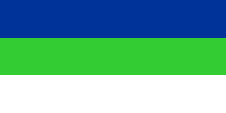 |
Nationalflagge – national flag, |
historische Flaggen – historical Flags: |
|
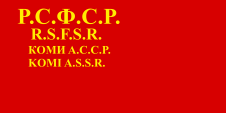 |
1937–1938, Flagge der Autonomen Sowjetrepublik – flag of the autonomous soviet republic, Seitenverhältnis – ratio = 1:2, Quelle/Source, nach/by: World Statesmen |
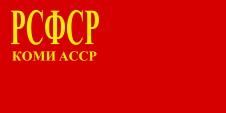 |
1938–1954, Flagge der Autonomen Sowjetrepublik – flag of the autonomous soviet republic, Seitenverhältnis – ratio = 1:2, Quelle/Source, nach/by: World Statesmen |
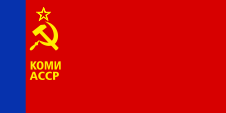 |
1954–1991, Flagge der Autonomen Sowjetrepublik – flag of the autonomous soviet republic, Seitenverhältnis – ratio = 1:2, Quelle/Source, nach/by: World Statesmen |
 |
1991–1997, Nationalflagge – national flag, Seitenverhältnis – ratio = 1:2, Quelle/Source, nach/by: Wikipedia (FR) |
|
siehe auch – look also: Flaggengeschichte der Sowjetrepubliken der UdSSR – flag history of the soviet republics of the USSR |
|
|
|
|
Bedeutung/Ursprung der Flagge – Meaning/Origin of the Flag: |
|
| Die Flagge wurde am 27.11.1991 angenommen, im Format 1:2, am 17.12.1997 wurde das Format auf 2:3 abgeändert. Das alte Format 1:2 geht auf die Flaggen der Sowjetunion zurück. Die bolschewistischen Flaggen waren fast alle im 1:2-Format gehalten, als sichtbarar Bruch mit dem monarchistischen und bürgerlichen 2:3-Format. | The flag was adopted on 27th of November in 1991, in the format-ratio of 1:2, on 17th of December in 1997 the format was changed to 2:3. The old format-ratio of 1:2 goes back to the flags of the Soviet Union. The Bolshevist flags were almost designed in 1:2 format, as a visible break with the monarchist and bourgeois format-ratio of 2:3. |
| Die Flagge repräsentiert die Natur von Komi. Das Blau steht für die Pracht und Weite des nördlichen Himmels. Das Grün steht für die Natur, ihre Fülle und die Taiga. Das Weiß steht für den Schnees, die Reinheit der Natur des Nordens, und für Einfachheit und Strenge. Nach einer anderen Interpretation steht das Weiß für die Gleichheit und Einheit der in Komi lebenden Menschen und Kulturen. | The flag represents the nature of Komi. Blue represents the splendor and vastness of the northern sky. Green stands for the nature, its fullness and the Taiga Woods. White stands for the snow, the purity of the nature of the north, and for simplicity and rigour. According to a different interpretation, white stands for the equality and unity of the people and cultures who living in Komi. |
| Die Flaggen, die zu Sowjet-Zeiten verwendet wurden, entsprachen alle dem immer gleichen Schema, wie es für Sowjetische Autonome Republiken vorgesehen war: Zwischen 1923 und 1937 oft nur ein einfabiges rotes Flaggentuch mit einer goldenen Inschrift, die den Landesnamen zeigte. Manchmal nur als Abkürzung, manchmal mit vollem Namen, manchmal nur in Russisch oder auch mehrsprachig. Ab etwa 1937 wurden manchmal noch Hammer, Sichel und Stern ergänzt. Ab etwa der Mitte der 50-er Jahre wurden mehrfarbige Flaggen für die Republiken der Sowjetunion eingeführt, deren Strickmuster die untergeordneten Autonomen Sowjetrepubliken zu übernehmen hatten. |
The flags, which were used in the Soviet era corresponded all to the same pattern as it was intended for the Soviet Autonomous Republics:
Between 1923 and 1937 frequently only a single-coloured red bunting with a golden inscription, showing the name of the country. Sometimes only as a shortcut, sometimes the full name, sometimes only in Russian or even multilingual. From about 1937 hammer, sickle and star were sometimes added. From about the mid-50s multicolored flags were introduced for the republics of the Soviet Union, whose knitting patterns had to be taken over by the subordinated autonomous Soviet republics. |
| Quelle/Source: Volker Preuß, Wikipedia (EN), Flaggen Enzyklopädie | |
Wappen – Coat of Arms: |
|
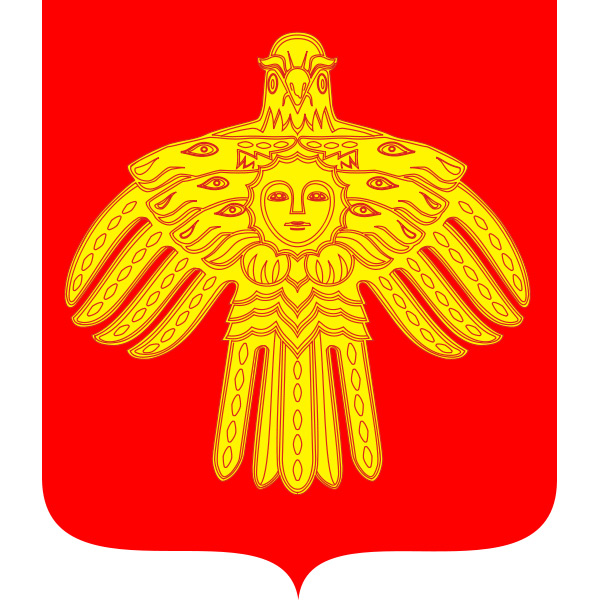 |
Wappen von Komi – coat of arms of Komi, Quelle/Source: Russiatrek |
Landkarten – Maps: |
geographische Lage in Russland – geographical position within Russia: |
Landkarte des Landes – map of the country: |
Zahlen und Fakten – Numbers and Facts: |
|
|
|
|
|
|
|
|
|
|
|
|
|
|
|
Geschichte: |
| 1472 ·
Unterwerfung durch Russland 1921 · Errichtung der Sowjetdiktatur, Proklamation der Autonomen Region Komi 1936 · Erhebung zur Autonomen Sozialistischen Sowjetrepublik Komi, in der Folgezeit Russifizierung 1950 · Verbot der Komi-Syrjänischen Sprache im Schulwesen 1991 · Ausrufung der Republik Komi, Föderationsvertrag mit Russland 31.12.1991 · die Sowjetunion löst sich auf, die Verfassung der Russischen Sozialistischen Föderativen Sowjetrepublik (RSFSR, Russland), ein ehemaliger Teilstaat der Sowjetunion bleibt vorerst in Kraft 25.12.1993 · eine neue Verfassung für Russland (Russische Föderation) tritt in Kraft, das Verhältnis zu den Gliedern der Föderation wird damit neu geregelt |
History: |
| 1472 ·
subjection by Russia 1921 · erection of the Soviet dictatorship, proclamation of the Autonomous Region of Komi 1936 · elevation to the Autonomous Socialistic Soviet Republic of Komi, in the afteryears Russification 1950 · interdiction of the Komi-Zyryan language in the education system 1991 · proclamation of the Republic of Komi 31st of December in 1991 · the Soviet Union dissolves, the constitution of the Russian Socialist Federative Soviet Republic (RSFSR, Russia), a former substate of the Soviet Union, remains in force for the time being 25th of December in 1993 · a new constitution for Russia (Russian Federation) comes into force, and the relationships with the members of the federation is re-regulated in this way |
| Quelle/Source: Atlas zur Geschichte, World Statesmen, Russiatrek, Die Völker der Erde, Wikipedia (D) |
Ursprung des Landesnamens – Origin of the Country's Name: |
|
| Der Name des Landes gaht auf das hier lebende finno-ugrische Volk der Komi zurück. Die Angehörigen dieses Volkes wurden auch Syrjänen genannt. Seit den 50-er Jahren des 20. Jahrhunderts sind sie jeoch eine Minderheit im eigenen Land. | The name of
the country has its roots in the Finno-Ugric people of the Komi who live
here. The members of this people were also called Zyryans. Since the 1950s, they have always been a minority in their own country. |
| Quelle/Source: Volker Preuß | |